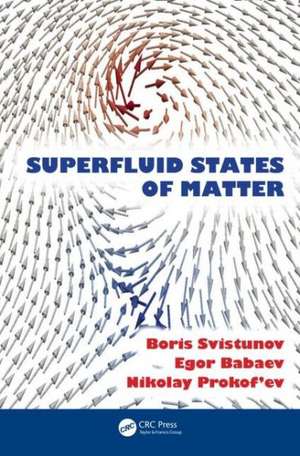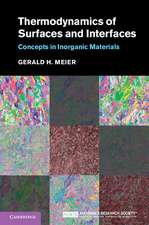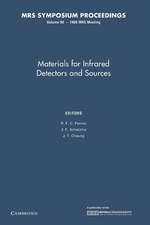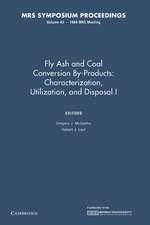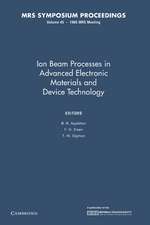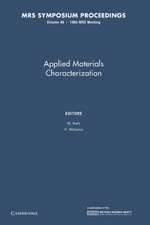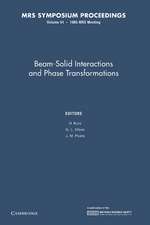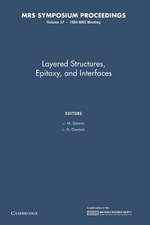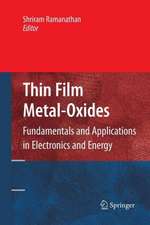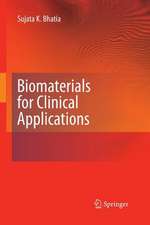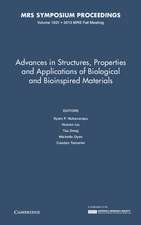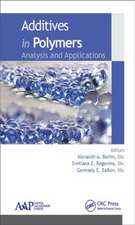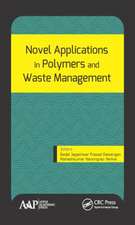Superfluid States of Matter
Autor Boris V. Svistunov, Egor S. Babaev, Nikolay V. Prokof'even Limba Engleză Hardback – 15 apr 2015
Superfluid States of Matter addresses the phenomenon of superfluidity/superconductivity through an emergent, topologically protected constant of motion and covers topics developed over the past 20 years. The approach is based on the idea of separating universal classical-field superfluid properties of matter from the underlying system’s “quanta.” The text begins by deriving the general physical principles behind superfluidity/superconductivity within the classical-field framework and provides a deep understanding of all key aspects in terms of the dynamics and statistics of a classical-field system.
It proceeds by explaining how this framework emerges in realistic quantum systems, with examples that include liquid helium, high-temperature superconductors, ultra-cold atomic bosons and fermions, and nuclear matter. The book also offers several powerful modern approaches to the subject, such as functional and path integrals.
Comprised of 15 chapters, this text:
- Establishes the fundamental macroscopic properties of superfluids and superconductors within the paradigm of the classical matter field
- Deals with a single-component neutral matter field
- Considers fundamentals and properties of superconductors
- Describes new physics of superfluidity and superconductivity that arises in multicomponent systems
- Presents the quantum-field perspective on the conditions under which classical-field description is relevant in bosonic and fermionic systems
- Introduces the path integral formalism
- Shows how Feynman path integrals can be efficiently simulated with the worm algorithm
- Explains why nonsuperfluid (insulating) ground states of regular and disordered bosons occur under appropriate conditions
- Explores superfluid solids (supersolids)
- Discusses the rich dynamics of vortices and various aspects of superfluid turbulence at T →0
- Provides account of BCS theory for the weakly interacting Fermi gas
- Highlights and analyzes the most crucial developments that has led to the current understanding of superfluidity and superconductivity
- Reviews the variety of superfluid and superconducting systems available today in nature and the laboratory, as well as the states that experimental realization is currently actively pursuing
| Toate formatele și edițiile | Preț | Express |
|---|---|---|
| Paperback (1) | 370.00 lei 3-5 săpt. | +43.91 lei 6-12 zile |
| CRC Press – 31 mar 2021 | 370.00 lei 3-5 săpt. | +43.91 lei 6-12 zile |
| Hardback (1) | 1299.23 lei 6-8 săpt. | |
| CRC Press – 15 apr 2015 | 1299.23 lei 6-8 săpt. |
Preț: 1299.23 lei
Preț vechi: 1584.43 lei
-18% Nou
Puncte Express: 1949
Preț estimativ în valută:
248.62€ • 265.85$ • 207.28£
248.62€ • 265.85$ • 207.28£
Carte tipărită la comandă
Livrare economică 18 aprilie-02 mai
Preluare comenzi: 021 569.72.76
Specificații
ISBN-13: 9781439802755
ISBN-10: 1439802750
Pagini: 583
Ilustrații: Aprox. 1250 to 1500 equations; 3 Tables, black and white; 98 Illustrations, black and white
Dimensiuni: 178 x 254 x 40 mm
Greutate: 1.22 kg
Ediția:New.
Editura: CRC Press
Colecția CRC Press
ISBN-10: 1439802750
Pagini: 583
Ilustrații: Aprox. 1250 to 1500 equations; 3 Tables, black and white; 98 Illustrations, black and white
Dimensiuni: 178 x 254 x 40 mm
Greutate: 1.22 kg
Ediția:New.
Editura: CRC Press
Colecția CRC Press
Public țintă
Academic and Professional Practice & DevelopmentCuprins
I Superfluidity from a Classical-Field Perspective. Neutral Matter Field. Superfluidity at Finite Temperatures and Hydrodynamics. Superfluid Phase Transition. Berezinskii–Kosterlitz–Thouless Phase Transition. II Superconducting and Multicomponent Systems. Charged Matter Fields. Multicomponent Superconductors and Superfluids, and Superconducting and Metallic Superfluids. III Quantum-Mechanical Aspects: Macrodynamics. Quantum-Field Perspective. Path Integral Representation. Supersolids and Insulators. Dynamics of Vortices and Phonons: Turbulence. IV Green’s Functions and Feynman’s Diagrams. Thermodynamics of Weakly Interacting Bose Gas. BCS Theory. Kinetics of Bose–Einstein Condensation. V Historical Overview. Superfluid States in Nature and the Laboratory. Index
Notă biografică
Boris Vladimirovich Svistunov received his MSc in physics in 1983 from Moscow Engineering Physics Institute, Moscow, Russia. In 1990, he received his PhD in theoretical physics from Kurchatov Institute (Moscow), where he worked from 1986 to 2003 (and is still affiliated with). In 2003, he joined the Physics Department of the University of Massachusetts, Amherst.
Egor Sergeevich Babaev received his MSc in physics in 1996 from St. Petersburg State Polytechnical University and A. F. Ioffe Physical Technical Institute, St. Petersburg, Russia. In 2001, he received his PhD in theoretical physics from Uppsala University (Sweden). In 2007, after several years as a postdoctoral research associate at Cornell University, he joined the faculty of the Physics Department of the University of Massachusetts, Amherst. He is currently a faculty member at the Royal Institute of Technology, Sweden.
Nikolay Victorovich Prokof’ev received his MSc in physics in 1982 from Moscow Engineering Physics Institute, Moscow, Russia. In 1987, he received his PhD in theoretical physics from Kurchatov Institute (Moscow), where he worked from 1984 to 1999. In 1999, he joined the Physics Department of the University of Massachusetts, Amherst.
Egor Sergeevich Babaev received his MSc in physics in 1996 from St. Petersburg State Polytechnical University and A. F. Ioffe Physical Technical Institute, St. Petersburg, Russia. In 2001, he received his PhD in theoretical physics from Uppsala University (Sweden). In 2007, after several years as a postdoctoral research associate at Cornell University, he joined the faculty of the Physics Department of the University of Massachusetts, Amherst. He is currently a faculty member at the Royal Institute of Technology, Sweden.
Nikolay Victorovich Prokof’ev received his MSc in physics in 1982 from Moscow Engineering Physics Institute, Moscow, Russia. In 1987, he received his PhD in theoretical physics from Kurchatov Institute (Moscow), where he worked from 1984 to 1999. In 1999, he joined the Physics Department of the University of Massachusetts, Amherst.
Recenzii
"This book offers a modern treatment of the subject that provides conceptual insight as well as technical details. … The book reviews the variety of superfluid and superconducting systems available today in nature and the laboratory, as well as the states that experimental realization is currently actively pursuing. … a valuable resource on the subject for a wide range of readers from beginning graduate students to established scholars."
—Zentralblatt MATH 1317
"This book presents this field in an attractive way, emphasizing deep unifying concepts of symmetry and topology while maintaining firm connection to concrete physical realities."
—Frank Wilczek, Nobel Laureate in Physics (2004) and Herbert Feshbach Professor of Physics, Massachusetts Institute of Technology
"This fascinating book contains a lucid, useful, and up-to-date guide to understanding the burgeoning field of superfluid states of quantum matter. It instantly becomes the ultimate resource on the subject for a wide range of readers from beginning graduate students to established scholars."
—Professor Victor Galitski, Joint Quantum Institute, University of Maryland
"The authors develop the concepts of superfluidity in a well-organized modern view and include some of its most fascinating applications at the forefronts of interdisciplinary research, from novel electronic superconductors to cold atomic gases and quark matter. I expect this will become a celebrated book that students and researchers in our field have been waiting for."
—W. Vincent Liu, Professor of Physics, University of Pittsburgh
"This book is a timely and valuable addition to the study of superfluidity since it emphasizes the classical-field aspects and relies on Feynman path integrals. The authors are well-recognized authorities in this area."
—Professor Alexander Fetter, Stanford University
"This book on superfluidity and superconductivity is unique and comprehensive. It reflects the broad expertise of the authors who have made important contributions to our understanding of many different physical systems. I found it refreshing that the material is presented from a modern perspective in a unifying way."
—Wolfgang Ketterle, Nobel Laureate in Physics 2001 and John D. MacArthur Professor of Physics, Massachusetts Institute of Technology
"… a modern treatment of the subject that provides conceptual insight as well as technical details. … It is rare that a textbook can cover such a wide range of topics without losing too much technical detail. The textbook promises to be a must-read for graduate students in strongly correlated quantum fluids."
—Dr. Derek Lee, Department of Physics, Imperial College London
"This book fills a real gap by placing all the ‘folklore’ describing superfluid systems in terms of classical fields within a coherent theoretical framework and using this as the conceptual foundation upon which subsequent (particularly quantum) developments are developed. The authors’ scholarship and enthusiasm for the subject are evident throughout, and to their credit, they take time to develop and explain important concepts as they arise."
—Simon A. Gardiner, Professor and Head of Section in the Centre for Atomic and Molecular Physics, Durham University
"This is a very timely and welcome addition to the literature on superfluidity. Its starting point in hydrodynamics makes this book unique. The authors manage to lead the reader from the basics to the state of the art."
—Carsten Timm, Professor of Condensed Matter Theory, Technische Universität Dresden
"This is an excellent book in the field of strongly interacting systems written by authors who have made exceptional contributions to practically every topic. It combines an innovative approach with rigorous self-contained analytics and a powerful numerical scheme … The coverage of topics—from the foundations exposed in a new light to novel composite superfluids and supersolids—is exhaustive and creative."
—Anatoly Kuklov, Associate Professor of Engineering Science and Physics, College of Staten Island, The City University of New York
"The authors are scientists of international distinction, and their book is written with impressive assurance and authority…. a tour de force on theories of superfluidity" –Contemporary Physics (May 2016)
—Zentralblatt MATH 1317
"This book presents this field in an attractive way, emphasizing deep unifying concepts of symmetry and topology while maintaining firm connection to concrete physical realities."
—Frank Wilczek, Nobel Laureate in Physics (2004) and Herbert Feshbach Professor of Physics, Massachusetts Institute of Technology
"This fascinating book contains a lucid, useful, and up-to-date guide to understanding the burgeoning field of superfluid states of quantum matter. It instantly becomes the ultimate resource on the subject for a wide range of readers from beginning graduate students to established scholars."
—Professor Victor Galitski, Joint Quantum Institute, University of Maryland
"The authors develop the concepts of superfluidity in a well-organized modern view and include some of its most fascinating applications at the forefronts of interdisciplinary research, from novel electronic superconductors to cold atomic gases and quark matter. I expect this will become a celebrated book that students and researchers in our field have been waiting for."
—W. Vincent Liu, Professor of Physics, University of Pittsburgh
"This book is a timely and valuable addition to the study of superfluidity since it emphasizes the classical-field aspects and relies on Feynman path integrals. The authors are well-recognized authorities in this area."
—Professor Alexander Fetter, Stanford University
"This book on superfluidity and superconductivity is unique and comprehensive. It reflects the broad expertise of the authors who have made important contributions to our understanding of many different physical systems. I found it refreshing that the material is presented from a modern perspective in a unifying way."
—Wolfgang Ketterle, Nobel Laureate in Physics 2001 and John D. MacArthur Professor of Physics, Massachusetts Institute of Technology
"… a modern treatment of the subject that provides conceptual insight as well as technical details. … It is rare that a textbook can cover such a wide range of topics without losing too much technical detail. The textbook promises to be a must-read for graduate students in strongly correlated quantum fluids."
—Dr. Derek Lee, Department of Physics, Imperial College London
"This book fills a real gap by placing all the ‘folklore’ describing superfluid systems in terms of classical fields within a coherent theoretical framework and using this as the conceptual foundation upon which subsequent (particularly quantum) developments are developed. The authors’ scholarship and enthusiasm for the subject are evident throughout, and to their credit, they take time to develop and explain important concepts as they arise."
—Simon A. Gardiner, Professor and Head of Section in the Centre for Atomic and Molecular Physics, Durham University
"This is a very timely and welcome addition to the literature on superfluidity. Its starting point in hydrodynamics makes this book unique. The authors manage to lead the reader from the basics to the state of the art."
—Carsten Timm, Professor of Condensed Matter Theory, Technische Universität Dresden
"This is an excellent book in the field of strongly interacting systems written by authors who have made exceptional contributions to practically every topic. It combines an innovative approach with rigorous self-contained analytics and a powerful numerical scheme … The coverage of topics—from the foundations exposed in a new light to novel composite superfluids and supersolids—is exhaustive and creative."
—Anatoly Kuklov, Associate Professor of Engineering Science and Physics, College of Staten Island, The City University of New York
"The authors are scientists of international distinction, and their book is written with impressive assurance and authority…. a tour de force on theories of superfluidity" –Contemporary Physics (May 2016)
Descriere
Discussing changes over the last two decades, this book represents an up-to-date treatment of superfluidity. It covers new superfluid materials such as high-temperature and multicomponentsuperconductors, ultra-cold atomic bosons and fermions, and helium supersolids. It begins by explaining the general physical principles behind the superfluid phenomenon as a framework for the discussion of realistic systems. The authors present superfluidity as a phenomenon of emergent topological order and show that all superproperties of the system are explained by the appearance of a new constant of motion.
